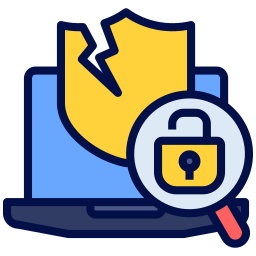
University of Louisville Company Cyber Security Posture
louisville.eduThe University of Louisville is a state supported research university located in Kentucky's largest metropolitan area. It was a municipally supported public institution for many decades prior to joining the university system in 1970. The University has three campuses. The 287-acre Belknap Campus is three miles from downtown Louisville and houses seven of the university's 11 colleges and schools. The Health Sciences Center is situated in downtown Louisville's medical complex and houses the university's health related programs and the University of Louisville Hospital. The 243-acre Shelby Campus is located in eastern Jefferson County.
UL Company Details
university-of-louisville
10127 employees
160398.0
611
Higher Education
louisville.edu
Scan still pending
UNI_7355452
In-progress
Between 800 and 900
This score is AI-generated and less favored by cyber insurers, who prefer the TPRM score.
 UL Global Score
UL Global Score.png)

University of Louisville Company Scoring based on AI Models
| Model Name | Date | Description | Current Score Difference | Score |
|---|---|---|---|---|
| AVERAGE-Industry | 03-12-2025 | This score represents the average cybersecurity rating of companies already scanned within the same industry. It provides a benchmark to compare an individual company's security posture against its industry peers. | N/A | Between 800 and 900 |
University of Louisville Company Cyber Security News & History
| Entity | Type | Severity | Impact | Seen | Url ID | Details | View |
|---|---|---|---|---|---|---|---|
| University of Louisville | Data Leak | 85 | 3 | 04/2017 | UNI10592922 | Link | |
Rankiteo Explanation : Attack with significant impact with internal employee data leaksDescription: University of Louisville targeted by the cyber attack that exposed tax information of 750 employees. Equifax investigated the incident and took preventive steps to protect employees data. | |||||||
University of Louisville Company Subsidiaries

The University of Louisville is a state supported research university located in Kentucky's largest metropolitan area. It was a municipally supported public institution for many decades prior to joining the university system in 1970. The University has three campuses. The 287-acre Belknap Campus is three miles from downtown Louisville and houses seven of the university's 11 colleges and schools. The Health Sciences Center is situated in downtown Louisville's medical complex and houses the university's health related programs and the University of Louisville Hospital. The 243-acre Shelby Campus is located in eastern Jefferson County.
Access Data Using Our API

Get company history
.png)
UL Cyber Security News
Louisville Cybersecurity Salaries: What Can You Expect to Earn?
Discover Louisville's cybersecurity salaries and what to expect in the Kentucky sector, from entry to senior levels.
UA Little Rock Secures $4.65 Million Grant to Advance Cybersecurity Education
UA Little Rock was among the first institutions in the nation to offer a graduate certificate in cybersecurity education, which also qualifies ...
UofL bans Chinese AI DeepSeek amid surge of state government bans
A cybersecurity firm recently discovered DeepSeek code contains a pathway for data to travel to servers controlled by China Mobile, a Chinese ...
UofL receives $3.4 million to grow cybersecurity workforce
As a Center of Academic Excellence, UofL has led the charge in growing the nation's cyber talent pool, receiving $8.3 million to lead ...
University of Arkansas at Little Rock to expand cybersecurity education efforts with support of grant
UALR was among the first institutions in the nation to offer a graduate certificate in cybersecurity education, which also qualifies teachers to ...
Louisville Metro Council member testifies at US capitol about cybersecurity
Louisville Metro Council member Kevin Kramer appeared in Washington D.C. Tuesday to testify to a congressional committee on local ...
UA Little Rock secures $4.65 million grant for cybersecurity education
UA Little Rock will collaborate with academic partners DePaul University and the University of Louisville, as well as Dark Enterprises, a ...
S&T Works Tirelessly to Ensure Our Cybersecurity
S&T's Fleet Vehicle Cybersecurity Research effort is a collaborative initiative with UofL, PNNL, and SNL to research the impacts that malicious ...
UWF Center for Cybersecurity awarded $750,000 NCAE-C Grant to Lead National Cybersecurity Workforce Development Task Force
The task force will bring together the eight NCAE-C-funded workforce development programs, including CyberSkills2Work, an intensive ...

UL Similar Companies

Tufts University School of Dental Medicine
With four campuses in Massachusetts, Tufts is a research university committed to helping students and faculty generate bold ideas, innovate, and become active citizens of the world. Tufts' unique combination of research and liberal arts attracts students, faculty, and staff who thrive in an environm

University of Toronto
Founded in 1827, the University of Toronto is Canada’s top university with a long history of challenging the impossible and transforming society through the ingenuity and resolve of our faculty, students, alumni, and supporters. We are proud to be one of the world’s top research-intensive univers

University of South Carolina
With thriving academic and research excellence and a lively, welcoming student experience, the University of South Carolina brings the opportunities of higher education to new generations. South Carolina's unrivaled college experience has been sought by students, faculty and academic researchers fo

University of Cincinnati
The University of Cincinnati, top 5 university for co-op, offers students a balance of educational excellence and real-world experience. Since its founding in 1819, UC has been the source of many discoveries creating positive change for society, including the first antihistamine, the first co-op edu

Western Governors University
WGU, www.wgu.edu, is an online university for the 21st century. We are driven by a mission to expand access to higher education through online, competency-based degree programs. Since its establishment in 1997, WGU has grown into a national university, serving more than 120,000 students from all 50

Harvard Medical School
At Harvard Medical School, our mission is to create and nurture a diverse community of the best people committed to leadership in alleviating human suffering caused by disease. With our vast reservoir of talent, extensive network of affiliates and commitment to problem solving, Harvard Medical Schoo

Frequently Asked Questions
Explore insights on cybersecurity incidents, risk posture, and Rankiteo's assessments.
UL CyberSecurity History Information
How many cyber incidents has UL faced?
Total Incidents: According to Rankiteo, UL has faced 1 incident in the past.
What types of cybersecurity incidents have occurred at UL?
Incident Types: The types of cybersecurity incidents that have occurred incident Data Leak.
How does UL detect and respond to cybersecurity incidents?
Detection and Response: The company detects and responds to cybersecurity incidents through third party assistance with Equifax.
Incident Details
Can you provide details on each incident?

Incident : Data Breach
Title: Cyber Attack on University of Louisville
Description: University of Louisville targeted by the cyber attack that exposed tax information of 750 employees. Equifax investigated the incident and took preventive steps to protect employees data.
Type: Data Breach
What are the most common types of attacks the company has faced?
Common Attack Types: The most common types of attacks the company has faced is Data Leak.
Impact of the Incidents
What was the impact of each incident?

Incident : Data Breach UNI10592922
Data Compromised: Tax Information
What types of data are most commonly compromised in incidents?
Commonly Compromised Data Types: The types of data most commonly compromised in incidents are Tax Information.
Which entities were affected by each incident?

Incident : Data Breach UNI10592922
Entity Type: Educational Institution
Industry: Education
Location: Louisville, Kentucky
Response to the Incidents
What measures were taken in response to each incident?

Incident : Data Breach UNI10592922
Third Party Assistance: Equifax
How does the company involve third-party assistance in incident response?
Third-Party Assistance: The company involves third-party assistance in incident response through Equifax.
Data Breach Information
What type of data was compromised in each breach?

Incident : Data Breach UNI10592922
Type of Data Compromised: Tax Information
Number of Records Exposed: 750
Post-Incident Analysis
What is the company's process for conducting post-incident analysis?
Post-Incident Analysis Process: The company's process for conducting post-incident analysis is described as Equifax.
Additional Questions
Impact of the Incidents
What was the most significant data compromised in an incident?
Most Significant Data Compromised: The most significant data compromised in an incident was Tax Information.
Response to the Incidents
What third-party assistance was involved in the most recent incident?
Third-Party Assistance in Most Recent Incident: The third-party assistance involved in the most recent incident was Equifax.
Data Breach Information
What was the most sensitive data compromised in a breach?
Most Sensitive Data Compromised: The most sensitive data compromised in a breach was Tax Information.
What was the number of records exposed in the most significant breach?
Number of Records Exposed in Most Significant Breach: The number of records exposed in the most significant breach was 750.0.
What Do We Measure?
















Every week, Rankiteo analyzes billions of signals to give organizations a sharper, faster view of emerging risks. With deeper, more actionable intelligence at their fingertips, security teams can outpace threat actors, respond instantly to Zero-Day attacks, and dramatically shrink their risk exposure window.
These are some of the factors we use to calculate the overall score:
Identify exposed access points, detect misconfigured SSL certificates, and uncover vulnerabilities across the network infrastructure.
Gain visibility into the software components used within an organization to detect vulnerabilities, manage risk, and ensure supply chain security.
Monitor and manage all IT assets and their configurations to ensure accurate, real-time visibility across the company's technology environment.
Leverage real-time insights on active threats, malware campaigns, and emerging vulnerabilities to proactively defend against evolving cyberattacks.




